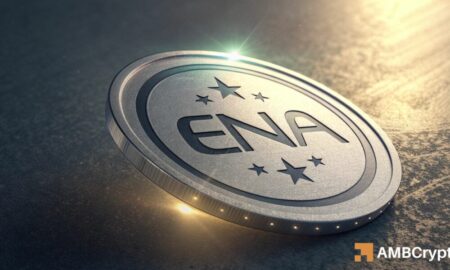The Necessity of Ossification in Ethereum’s Evolution
As Ethereum matures, the concept of ossification—where foundational blockchain rules remain unchanged—has emerged as a critical necessity for its scalability. With Ethereum currently securing hundreds of billions of dollars in assets and processing trillions of transactions annually, any abrupt changes to its protocol pose significant risks. Vitalik Buterin’s proposal to lock down the consensus layer aims to address this concern while ensuring that developers can still innovate within the adaptable Ethereum Virtual Machine (EVM). This approach seeks to reduce vulnerabilities in Layer 1 while allowing flexibility in the layers above, thus balancing stability with innovation.
The Shift Towards Stability in a Maturing Ecosystem
Buterin’s vision comes at a time when the era of extensive experimentation in the Ethereum ecosystem is dwindling. As institutional investments pour into Ethereum and meme coins capture retail interest, the network is becoming more risk-averse. This shift indicates a need for clearer boundaries, allowing for a stable and predictable core while permitting new developments in rollups, wallets, and application layers. Ossification effectively delineates these layers, establishing a robust foundation upon which Ethereum can continue to grow without compromising its integrity.
Corporate Treasuries: A Growing Phenomenon
The move towards a fixed core is timely, coinciding with a significant accumulation of Ethereum by public companies and funds treating it as a viable asset for their balance sheets. Data shows that BitMine Immersion Technologies leads the pack, holding 1,713,899 ETH valued at over $5.27 billion. Other major holders include SharpLink Gaming and The Ether Machine, alongside prominent exchanges like Coinbase. This trend of institutional investment reflects a growing confidence in Ethereum’s potential as a long-term asset. The stability brought by ossification is essential for these large holders, who prefer a predictable and secure environment over frequent protocol changes.
Risk Management for Large Holders
The interest of institutional players in Ethereum is shifting the perception of ETH from a speculative asset to a more steady, yield-bearing investment. The advent of Layer 2 scaling has further alleviated pressure on the main chain, allowing daily activities to be handled off-chain while the core remains stable. With institutional investors now holding large quantities of ETH, the emphasis on predictability in protocol functions is paramount. The priorities of these stakeholders align with the principles of ossification: to minimize protocol surprises, reduce security vulnerabilities, and create a dependable ecosystem for staking and settlement.
Preparing for Quantum Challenges
Despite the advantages of a more rigid protocol structure, Ethereum still faces significant challenges ahead, particularly concerning its cryptographic framework. With the potential disruption posed by quantum computing on existing elliptic curve cryptography, Ethereum must adapt to quantum-resistant technologies by 2028. Successful execution of this upgrade will require an organized effort from validators, developers, and users to seamlessly transition without destabilizing the network. As institutional investments grow, organizations with substantial ETH holdings must feel assured that the network can survive such major security upgrades.
The Road Ahead: Anticipating the Fusaka Upgrade
The next significant milestone for Ethereum is the highly anticipated Fusaka upgrade on December 3. This upgrade will test the balance between ossification and the need for agile responses to evolving technological threats. If successful, the Fusaka upgrade could reinforce confidence in Ethereum’s structural integrity while maintaining its pace of innovation. The Ethereum community stands at a pivotal junction: embracing the advantages of a more stable protocol while ensuring it can adapt to future challenges, paving the way for its sustained growth and relevance in the blockchain ecosystem.
By understanding the balance between stability and innovation, Ethereum can ensure that it not only survives but thrives in the dynamic landscape of digital assets. The principle of ossification serves as a crucial framework for achieving this balance, offering both predictability and room for progress. In doing so, Ethereum positions itself as a leader in the blockchain sector, meeting the needs of institutional investors and developers alike.
















